The Role of Fiber in Heart Health
The Role of Fiber in Heart Health
Fiber and Heart Health: The Underrated Connection
With more than 450 blogs on my site, I’ve only made fiber the main focus once. That seems wild, considering how often I talk about it! So today, I’m giving fiber the attention it deserves—specifically, how it supports heart health and cholesterol levels.
If you’ve heard that fiber is good for your heart but aren’t sure why, I’m breaking it down here.
What is Fiber and Where Do We Find It?
Fiber is a type of carbohydrate (the others being starch and sugars) that our bodies can’t digest—which is a good thing! Fiber moves through our digestive system instead of being broken down for energy, providing various health benefits.
You’ll find fiber only in plant foods, such as:
Fruits and vegetables
Whole grains
Nuts and seeds
Legumes (beans, lentils, peas)
Animal foods contain zero fiber—unless added (like in some yogurts or high-fiber protein bars). That’s why a diet rich in plant-based foods is essential for meeting fiber needs.
The Two Types of Fiber (And Why Both Matter)
There are two main types of fiber:
Soluble fiber: Dissolves in water, forming a gel-like substance. It’s the type that helps lower cholesterol and improve heart health.
Insoluble fiber: Adds bulk to stool and supports digestive health by preventing constipation.
While both are important, soluble fiber is the star for heart health.
How Soluble Fiber Supports Heart Health
One of fiber’s most significant roles in cardiovascular health is its ability to lower LDL (“bad”) cholesterol. Here’s how it works:
Acts like a sponge: Soluble fiber binds to cholesterol in the digestive tract, preventing it from being absorbed into the bloodstream.
Supports healthy blood sugar levels: It slows digestion, reducing blood sugar spikes.
Feeds good gut bacteria: A healthy gut microbiome is linked to better heart health.
High-Soluble Fiber Foods to Add to Your Diet
If you want to increase your heart-healthy fiber intake, these foods are excellent sources of soluble fiber:
Oats – A breakfast staple that’s packed with heart-friendly fiber. This includes oatmeal as well as ready-to-eat cereals, including granola and yes, Cheerios (choose the original yellow box instead of the ones with added sugars).
Beans & Lentils – Black beans, chickpeas, and lentils are fiber powerhouses. However, don’t skip other types of beans; they are all beneficial.
Apples & Pears – The skin is where much of the fiber is, so don’t peel them!
Avocados – A great source of fiber and heart-healthy fats.
Sweet and White Potatoes – A nutrient-dense way to add fiber to your meals.
Chia Seeds & Flaxseeds – Tiny but mighty regarding fiber content.
How Much Fiber Do You Actually Need?
The Dietary Reference Intake (DRI) for fiber is:
Women: 25 grams per day
Men: 38 grams per day
Yet, the average American adult only gets about half of what’s recommended! I’ve seen individuals with less than 10 grams per day. That’s why focusing on fiber-rich foods is so important.
Fiber Supplements: Do You Need Them?
While whole foods should be the priority, fiber supplements can be helpful for some people. However, they aren’t a magic fix—and often contain just a fraction of what whole foods provide.
For example:
A fiber supplement may provide 5 grams of fiber per serving.
That’s about the same as a small bowl of oatmeal or a half-cup of black beans.
Whole foods also contain additional nutrients, antioxidants, and benefits that a supplement alone won’t provide.
How to Get More Fiber in Your Diet (Without Overwhelm)
Adding more fiber doesn’t have to mean drastic changes. Here are five easy ways to increase fiber daily:
Start your day with oats – Overnight oats, oatmeal, or even blending oats into smoothies.
Add beans to meals – Toss chickpeas in salads, add lentils to soups, or mix black beans into tacos.
Snack smarter – Choose fiber-rich options like popcorn, nuts, or apple slices with nut butter.
Go whole grain – Swap white rice for brown rice, choose whole-wheat bread, or try quinoa.
Boost with seeds – Sprinkle chia or flaxseeds into yogurt, smoothies, or oatmeal.
A Word of Caution: Increase Fiber Gradually
If you suddenly double your fiber intake overnight, your digestive system might not be happy.
To avoid bloating, gas, or discomfort, increase fiber slowly and drink plenty of water to help your body adjust.
Final Thoughts: Fiber is Key for Heart Health
While we often hear about soluble vs. insoluble fiber, most fiber-rich foods contain both types—so aiming for variety naturally ensures you’re getting enough.
The key takeaway? A fiber-rich diet is one of the best things you can do for your heart. And with so many delicious ways to add more fiber, there’s no reason to miss out!
Want more tips on heart-healthy nutrition? Check out the latest blogs atshelleyrael.com/blog and search for “heart” for heart-specific information and practical advice on making nutrition work for you.

